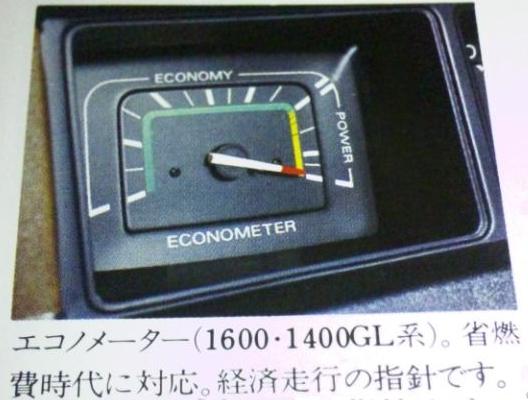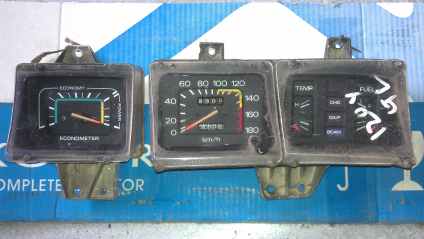| Revision as of 06:16, 21 August 2019 ddgonzal (Talk | contribs) <- Previous diff |
Revision as of 10:03, 13 January 2025 ddgonzal (Talk | contribs) Next diff -> |
||
| Line 1: | Line 1: | ||
| - | #REDIRECT [[B210 Gauges#Econometer]] | + | [[Category:Fuel System]] |
| + | {{Album|29826}} | ||
| + | |||
| + | Search: {{search|%E3%82%B5%E3%83%8B%E3%83%BC%E3%82%A8%E3%82%B3%E3%83%8E%E3%83%A2%E3%83%8B%E3%82%BF%E3%83%BC|サニーエコノモニター}} Sunny Economonitor | ||
| + | |||
| + | Search: {{search|%E3%82%B5%E3%83%8B%E3%83%BC%E3%82%A8%E3%82%B3%E3%83%8E%E3%83%A1%E3%83%BC%E3%82%BF%E3%83%BC|サニーエコノメーター}} Sunny Econometer | ||
| + | |||
| + | A '''fuel-economy gauge''' signals to the driver the current engine state as it relates to fuel economy. Red or Yellow means poor fuel economy, Green means good fuel economy. This most directly relates to how far the accelerator pedal is pushed, so you might think the gauge is of limited use. However, up to 30% fuel economy gains can be achieved by tailoring your driving style to match. It is surprising how easing up on the pedal will affect economy, while still accelerating the car. | ||
| + | |||
| + | The Datsun gauge for the B210 was called was called '''Econo Meter'''/エコノメーター. The B310 version of the econometer (per Datsun catalog) was called '''Economonitor''' in Australia and '''ECONO MONITOR''' エコノモニター in Japan. | ||
| + | |||
| + | In operation, a green light appears at low throttle openings, and a red light at heavy throttle. It is of course a type of vacuum gauge. Does it work to enhance fuel economy? Yes. By keeping acceleration light, the driver can achieve fuel savings up to 30%. And yet you still have maximum power available, should you decide to put your foot down and throw economy to the wind. | ||
| + | |||
| + | In more general use, consider this quote by Bosch: | ||
| + | <blockquote>An Econometer is merely a vacuum gauge with different markings to directly indicate the economy benefits of each area of vacuum | ||
| + | operation.</blockquote> | ||
| + | |||
| + | Cars in the new millenium often have a '''fuel-consumption gauge''' which gives an instantaneous reading of liters/kilometer or miles/gallon. The econometer is a simpler technology, and perhaps is more enlightening to the driver. | ||
| + | |||
| + | Some new cars have an electronic fuel-economy gauge, with red/green lights or a power/eco readout. This works the same as an econometer and is based on vacuum. | ||
| + | |||
| + | = B210 = | ||
| + | {{BackTo|B210 Gauges|Econometer}} | ||
| + | |||
| + | For Japan, after '75-10 an Econometer (vacuum gauge) was fitted to the tachometer spot (round or square). Tachometer was only standard on GX. | ||
| + | |||
| + | {{Album|29829|was=tnp4190079.jpg\Datsun%20Misc/B210}} {{Album|29828}} | ||
| + | |||
| + | {{Album|29827}} {{Album|25298}} | ||
| + | |||
| + | = B310 = | ||
| + | {{BackTo|B310 Dash|Econometer}} | ||
| + | |||
| + | With the B310 meter, a green light appears at low throttle openings, and a red light at heavy throttle. This indicates the relative fuel economy. | ||
| + | |||
| + | 24895-H9000 ECONOMONITOR ASSY GL,SGL -7811 [large type] | ||
| + | 24895-H9010 ECONOMONITOR ASSY GL,SGL 7812-7909 [small type] | ||
| + | |||
| + | H9010 ECONO MONITOR Japan in GL dash small gauge on right side along with EXH TEMP and BRAKE lamps | ||
| + | <br>{{UploadPost|174_5c10d1413b248.jpg|490146}} {{UploadPost|174_667b1b283292b.jpg|498532}} | ||
| + | |||
| + | H9000 Round dash early -7811 with lights for OIL and CHG. The tubes on the back are for the bulbs | ||
| + | <br>{{Album|29594}} {{Album|29595}} | ||
| + | |||
| + | {{End}} | ||
Revision as of 10:03, 13 January 2025
Search: サニーエコノモニターᴳ Sunny Economonitor
Search: サニーエコノメーターᴳ Sunny Econometer
A fuel-economy gauge signals to the driver the current engine state as it relates to fuel economy. Red or Yellow means poor fuel economy, Green means good fuel economy. This most directly relates to how far the accelerator pedal is pushed, so you might think the gauge is of limited use. However, up to 30% fuel economy gains can be achieved by tailoring your driving style to match. It is surprising how easing up on the pedal will affect economy, while still accelerating the car.
The Datsun gauge for the B210 was called was called Econo Meter/エコノメーター. The B310 version of the econometer (per Datsun catalog) was called Economonitor in Australia and ECONO MONITOR エコノモニター in Japan.
In operation, a green light appears at low throttle openings, and a red light at heavy throttle. It is of course a type of vacuum gauge. Does it work to enhance fuel economy? Yes. By keeping acceleration light, the driver can achieve fuel savings up to 30%. And yet you still have maximum power available, should you decide to put your foot down and throw economy to the wind.
In more general use, consider this quote by Bosch:
An Econometer is merely a vacuum gauge with different markings to directly indicate the economy benefits of each area of vacuum operation.
Cars in the new millenium often have a fuel-consumption gauge which gives an instantaneous reading of liters/kilometer or miles/gallon. The econometer is a simpler technology, and perhaps is more enlightening to the driver.
Some new cars have an electronic fuel-economy gauge, with red/green lights or a power/eco readout. This works the same as an econometer and is based on vacuum.
B210
<-- back to B210 Gauges
For Japan, after '75-10 an Econometer (vacuum gauge) was fitted to the tachometer spot (round or square). Tachometer was only standard on GX.
B310
<-- back to B310 Dash
With the B310 meter, a green light appears at low throttle openings, and a red light at heavy throttle. This indicates the relative fuel economy.
24895-H9000 ECONOMONITOR ASSY GL,SGL -7811 [large type] 24895-H9010 ECONOMONITOR ASSY GL,SGL 7812-7909 [small type]
H9010 ECONO MONITOR Japan in GL dash small gauge on right side along with EXH TEMP and BRAKE lamps
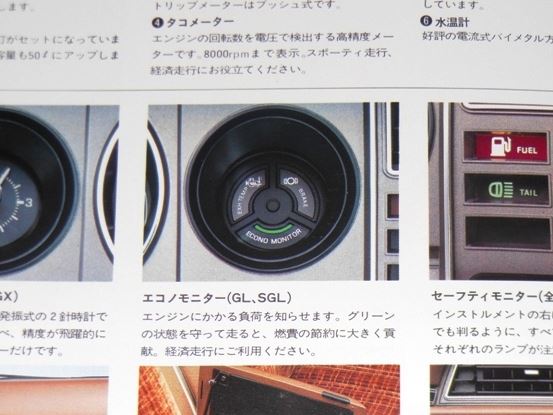
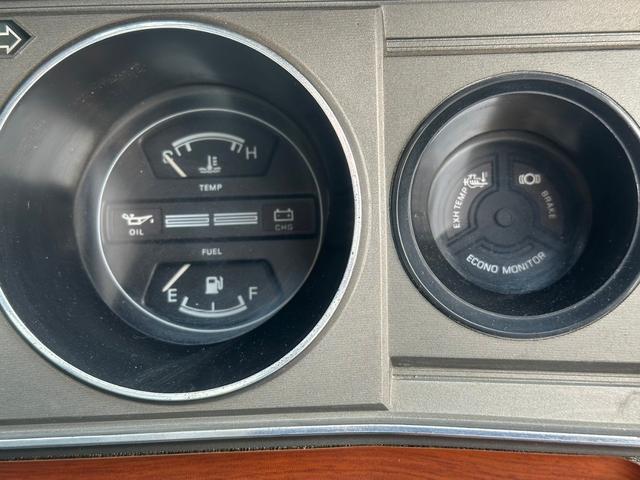
H9000 Round dash early -7811 with lights for OIL and CHG. The tubes on the back are for the bulbs
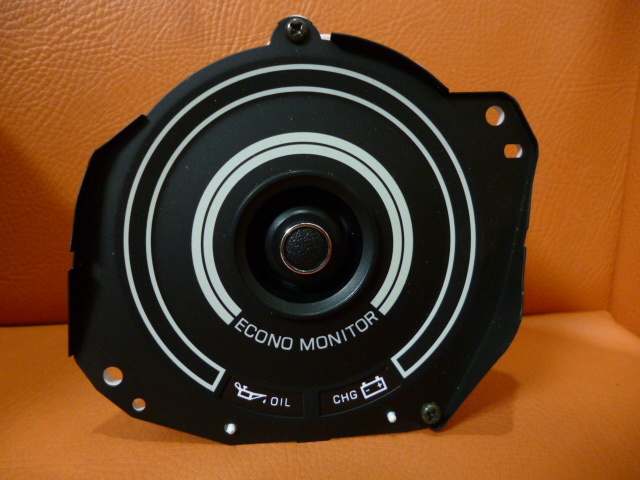
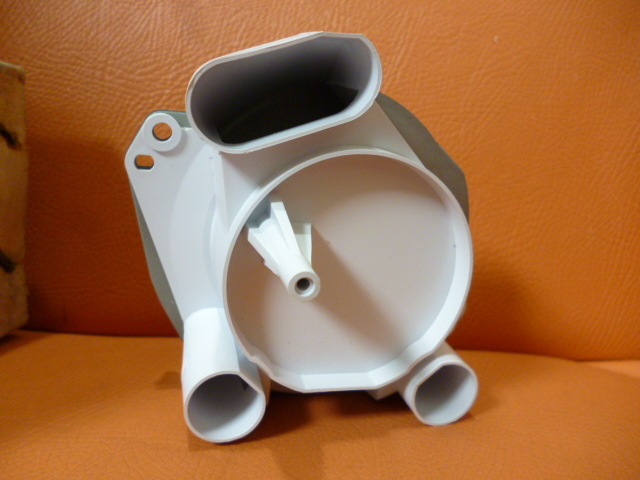

![[Datsun 1200 encyclopedia]](/wiki/upload/wiki.png)


